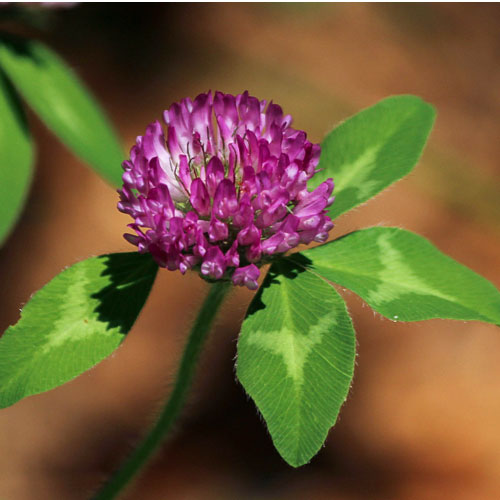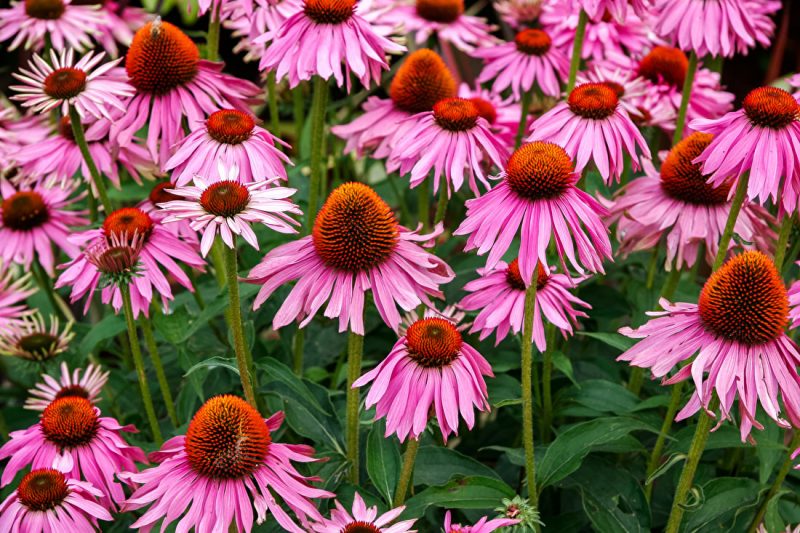This blog series that began last month considers how Western herbalism treats heat as inflammation with little differentiation in herbal treatment. Yet, heat is not the same as inflammation; rather, inflammation is a kind of heat confined to a specific area of the body.
Heat can also include such signs and symptoms as red eyes and/or face, thirst, dry throat, dry stools or yellow, watery and smelly stools, dark and scanty urine, rapid pulse, yellow tongue coating, and a burning sensation in the palms, soles and/or chest. Another type of heat is associated with colds, flu, allergies, and red skin eruptions.
Traditional Chinese Medicine (TCM) assigns herbs that clear heat to five different categories, plus an additional one to clear surface heat in order to specifically address which type of heat appears in the body. Learning herbs according to the type of heat they clear leads to a swifter and more accurate treatment approach. Here we discuss the second type of heat-clearing herbs, those that also resolve toxins.
Herbs that Clear Heat and Resolve Toxins
This category of heat-clearing herbs contains some of the most commonly used herbs for treating heat in Western herbalism: echinacea, dandelion, burdock root, chaparral, milk thistle, pau d’arco, poke, red clover, sarsaparilla, sassafras, usnea, and yerba mansa.
This category also contains herbs from Eastern traditions such as andrographis, gotu kola, guduchi, honeysuckle, forsythia, isatis, neem, and noni.
When most people hear of any of these herbs, they think about treating inflammation. But these herbs, while definitely clearing heat, actually have a special ability to resolve toxins in the body, too, specifically cleansing the blood and lymph. As such, they are useful in treating infectious and contagious diseases. The herbs in this grouping include the alterative or blood-cleansing herbs of Western herbalism.
This is perhaps the most important subcategory of heat-clearing herbs because of its broad application. Some are directly antibacterial and antiviral; others work indirectly by activating specific organs and processes of detoxification; a few have mild tonic properties. Many are used only symptomatically for particular toxins.
How does one tell if there’s an infectious condition? According to TCM, it’s when there is an area that is hot, swollen, and painful and with a fever and lethargy, plus the person is sick. Various types of sores may also be toxic, such as abscesses. Mastitis, viral infections and dysentery are also toxic.
Contraindications for using these herbs are if there is coldness, or no symptoms of heat as listed above. Use with caution if there is blood and/or yin deficiency.
Echinacea
Echinacea has become known mainly as an herb for cold and flu, for which it can be helpful, but only using echinacea this way overlooks one of its main and most powerful effects: for toxic conditions. Echinacea is a wonderful blood cleanser, effective for blood poisoning and toxicity, cancer, and other poisonous conditions, including sepsis. It further decongests the lymph, treating swollen glands and offensive discharges, alleviates the negative effects of vaccinations, lowers fevers (including typhoid fever), and treats sore throats.
This points to its main use as an herb for acute inflammations and infections rather than as a “tonic” herb. For those with heat, echinacea is fine alone, but those with coldness or any deficiencies may need to combine it with ginseng or astragalus for best results.
Externally, echinacea is excellent for all venomous bites, such as from snakes, insects and spiders, plus for poison oak and ivy, boils, cuts, wounds, and other skin infections. It is also useful for teething, mouth and throat inflammation, toothache, canker sores, herpes simplex, tonsillitis, and mastitis. It is even more effective when taken both externally and internally, the more frequently the better – every one to two hours during acute inflammation, tapering off as symptoms improve – or when combined with other remedies, such as salves, washes, baths and poultices.
Echinacea is such a valuable herb, I always have its tincture nearby for first aid and emergencies. One time when my son came home from college, he arrived with a tiny but very painful red wound on his ankle. Over the following hours, the red spot turned into a red line moving up his leg. I immediately saturated a piece of cotton with echinacea tincture and taped it on the wound, changing it every couple hours. At the same time, I gave him a dropperful of its tincture every 20 minutes. Within an hour, the blood poisoning line was quickly receding and had disappeared with a few hours, the pain leaving with it.
How does echinacea work? It is not an “immune tonic” but an immune stimulant. It activates leukocytes (white blood cell infection fighters), macrophages, phagocytosis, and T-cell formation, which assist the healing process, raise the body’s immune level, and encourage wounds to heal. It also inhibits the hyaluronidase enzyme (through echinacin B) which doesn’t allow pathogens to break down cell walls and pass into sensitive tissues. Echinacea is antiviral by inducing an interferon-like mechanism. Thus, it is one of the most powerful and effective remedies against all kinds of bacterial infections and inflammations. Large doses can be taken because it is not toxic, and its effects are potentiated if you exercise within ½ hour minutes after taking it.
Commentary: According to herbalist Steven Foster, there are approximately nine species of Echinacea, all native to North America. The variety preferred by the Eclectic physicians of the early part of this century is E. angustifolia but other varieties, including E. pallida and the most common and domesticated E. purpurea, are of similar therapeutic effectiveness. Additional varieties include E. simulata and E. paradoxa.
Echinacea Root, Aerial Portion Echinacea spp.
Part Used: root, aerial portion
Family: Asteraceae
Energy and flavors: Cool, bitter, pungent
Organs and channels affected: Lung, Stomach, Liver
Chemical constituents: Echinacin, echinacin B, high molecular-weight polysaccha- rides, polyacetylenes, highly unsaturated alkamides, caffeic acid derivatives (some species have unique constituents
Properties and actions: Alterative, carminative, vulnerary, antibacterial, antiviral; clears Heat toxins
Caution: There are no recognized side effects of echinacea overdose, but it can cause a scratchy, tickling sensation in the throat from excessive use.
Dosage and preparation: Standard decoction (root). Standard infusion (aerial por- tions). Tincture (all parts of fresh plant combined – 1:2 @75% ABV; dry leaf – 1:5 @50% ABV; dry root: 1:4 @70% ABV; dry seed: 1:5 @75% ABV), 10-30 drops TID.

Red Clover
Red clover has many wonderful toxin-dispelling actions. It is used for cancer, especially breast, uterine, and lymphatic (apply externally and take internally, frequently, and in large amounts), especially when combined with chaparral (Larrea tridentata). It also treats firm and swollen lymph glands, skin problems such as eczema and psoriasis, fever, inflamed lungs, whooping cough, and inflammatory conditions associated with arthritis and gout.
As a wonderful blood thinner (due to its coumarin content), it’s too bad more people don’t use this valuable herb rather than blood-thinning medications that cause side effects, such as tiredness. Further, red clover contains formononetin, a known phytoestrogen, and so has mild estrogenic activity that reduces night sweats and hot flashes, vaginal dryness, as well as spermatorrhea. It may help maintain bone health for many a grateful peri/menopausal woman.
Red Clover Flower Trifolium pratense
Also called: Trifolium pratense Flos
Family: Fabiaceae
Energy and flavors: Cool, sweet, salty
Organs and channels affected: Liver, Heart, Lung
Chemical constituents: Vitamins, minerals, coumarins
Properties and actions: Alterative, antispasmodic, expectorant, antitumor; clears Heat toxins, cools the Blood
Contraindications: estrogen-receptor-positive (ER+) cancers
Dosage and preparation: Infusion, 6-15g. Standard tincture (1:2 @75% ABV fresh; 1:5 @60-65% ABV dry).

